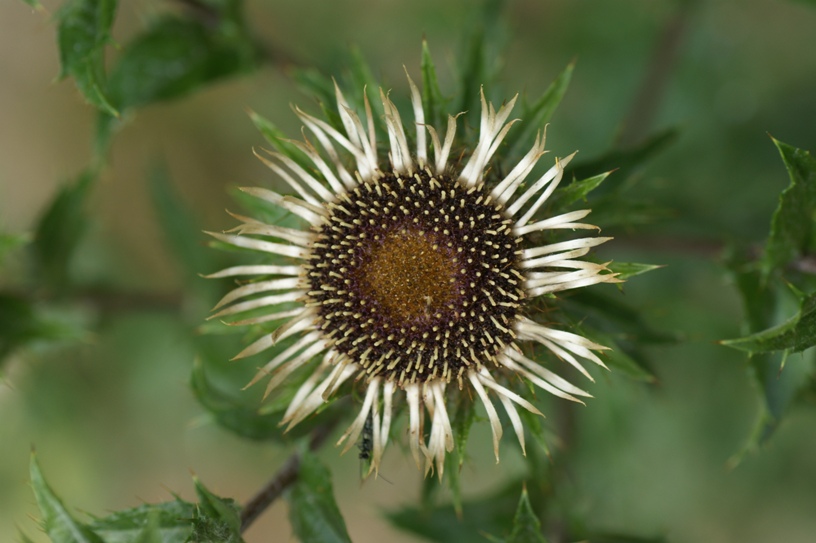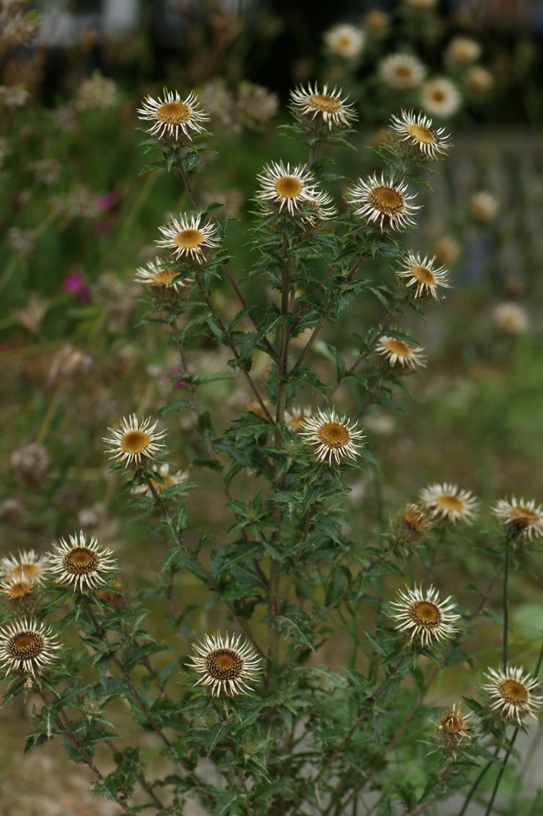Carline Thistle
Carlina vulgaris
A vegetable hygrometer
The carline thistle can either be a biannual or a perennial that overwinters as a rosette and dies after flowering. The slightly velvety, reddish stem reaches up to 45 cm in height. Many carline thistles have three flower heads, but not always. Beneath these artichoke-like flower heads are two types of involucre leaves (highly conspicuous bracts). The outer leaf-like leaves are short relative to the longer inner ones. They are known for their ability to respond to moisture in the air and thus act like a hygrometer. In good weather they open but when it is damp they bend inwards towards each other to form a dome over the flower to protect it from the rain.
This rare plant is restricted to dry, chalky soils with open vegetation. Traditionally the carline thistle was used as a sexual stimulant.
Themes
Crown jewel in Domies Toen.
Carline thistle can be used in salads or as an alternative to artichoke.
In the past this plant was used as medicine. Together with Valeriana, in a ratio of 3:5, it was prescribed as an aphrodisiac.
Details
| Description: | Herb, 15 to 40 cm. |
|---|---|
| Distributions: | Europe, south to the pyrenees and south italy; north to scotland and south scandinavia. also in western and central asia. |
| Habitat: | Coastal dunes, limestone slopes, grassland, roadside verges, dykes, river dunes, loamy heather, excavation sites, mining deposit and along railway lines. |
| Year cycle: | Flowers only once, (monocarpic biennuals and short-lived perennials) |
| Hardiness: | 5 - 14 f (hardy - cold winter) |
| Flowering period: | Juli - september |
| Flower color: | Yellow, brown |
| At its best: | Juli - september |


